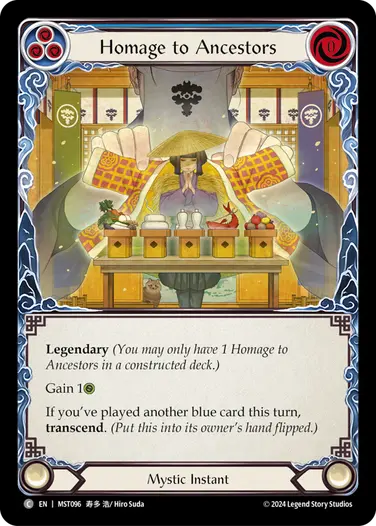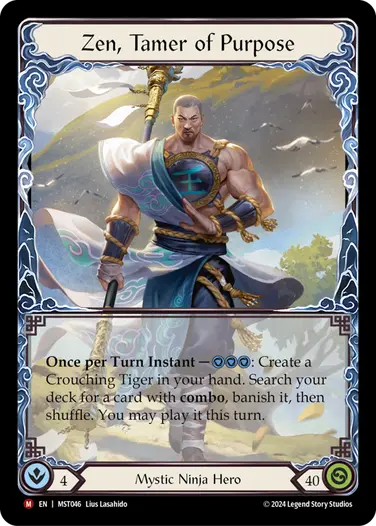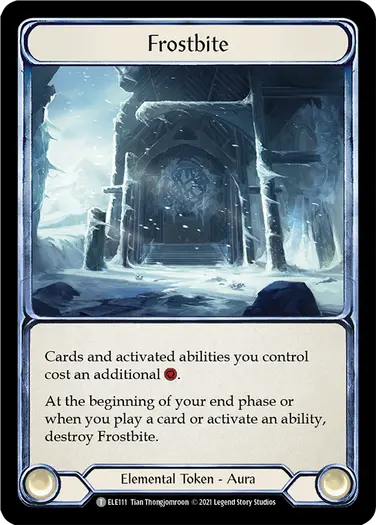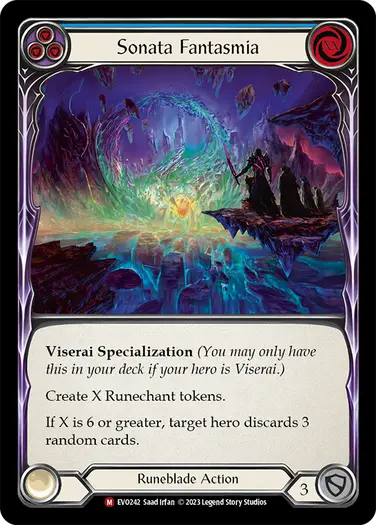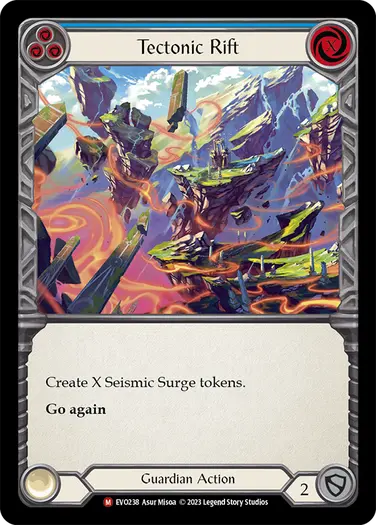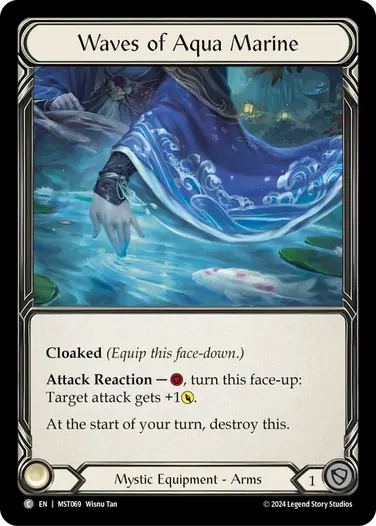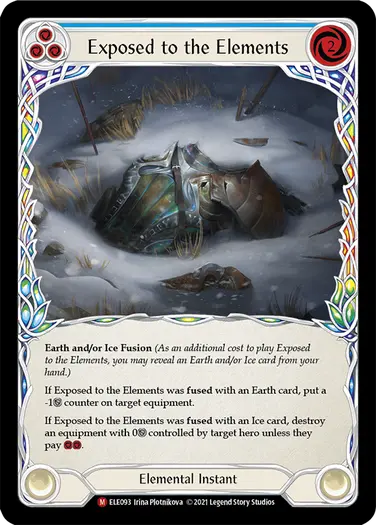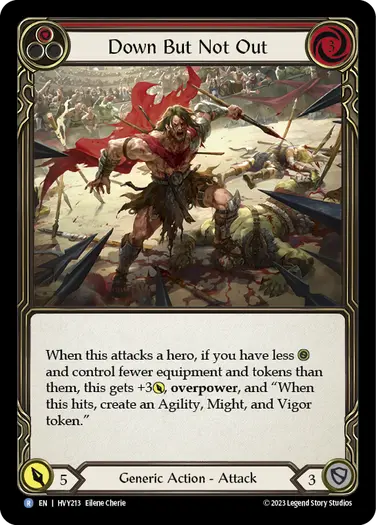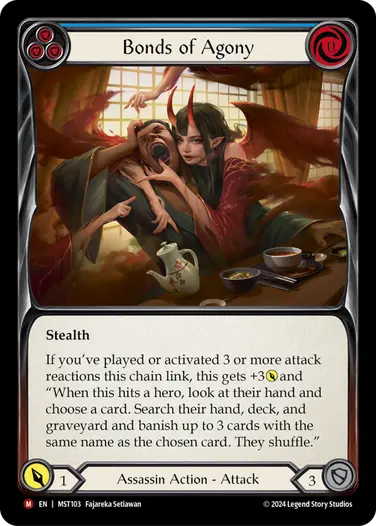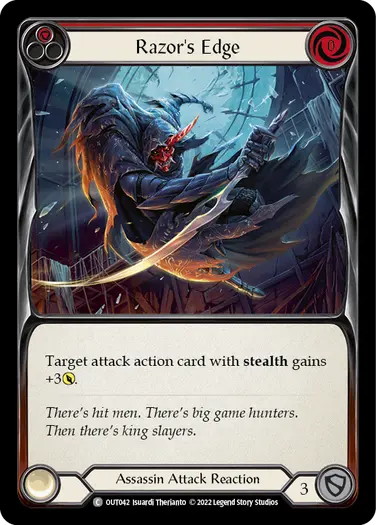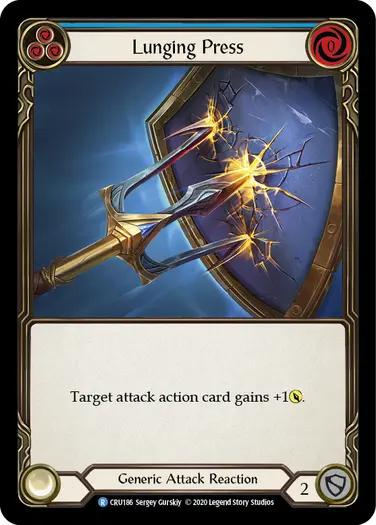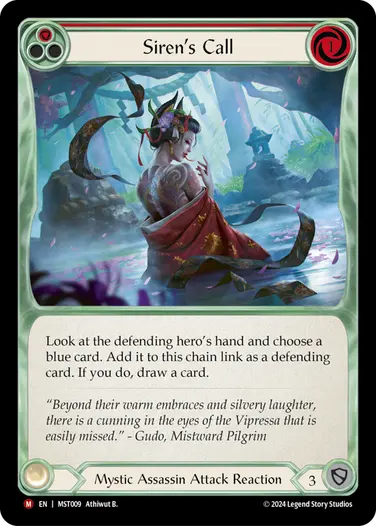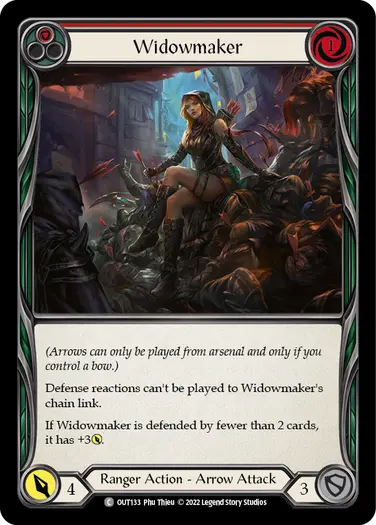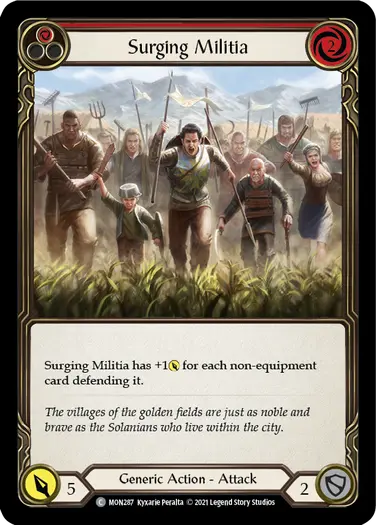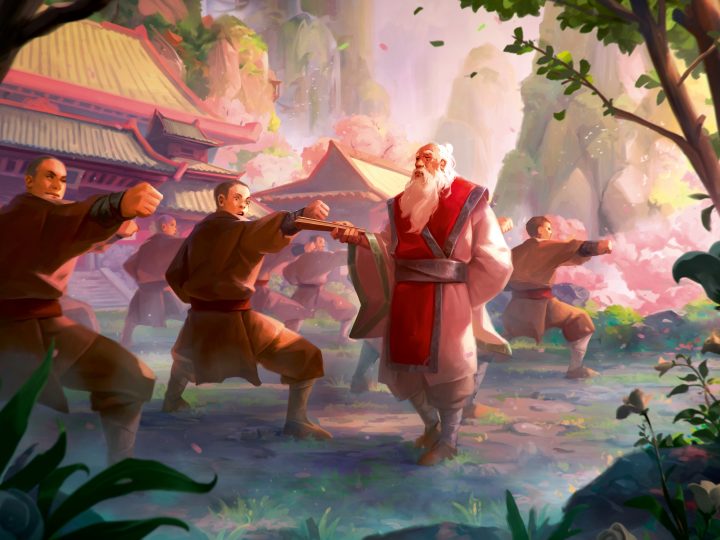Your journey has only just begun. As you search for enlightenment, remember to stay true to the path. Follow the guidance of our ancestors with a careful eye, and you will not be lead astray. Rules and Policy manager Joshua Scott is back to teach us about more advanced rulings and interactions in the newest set, Part the Mistveil!
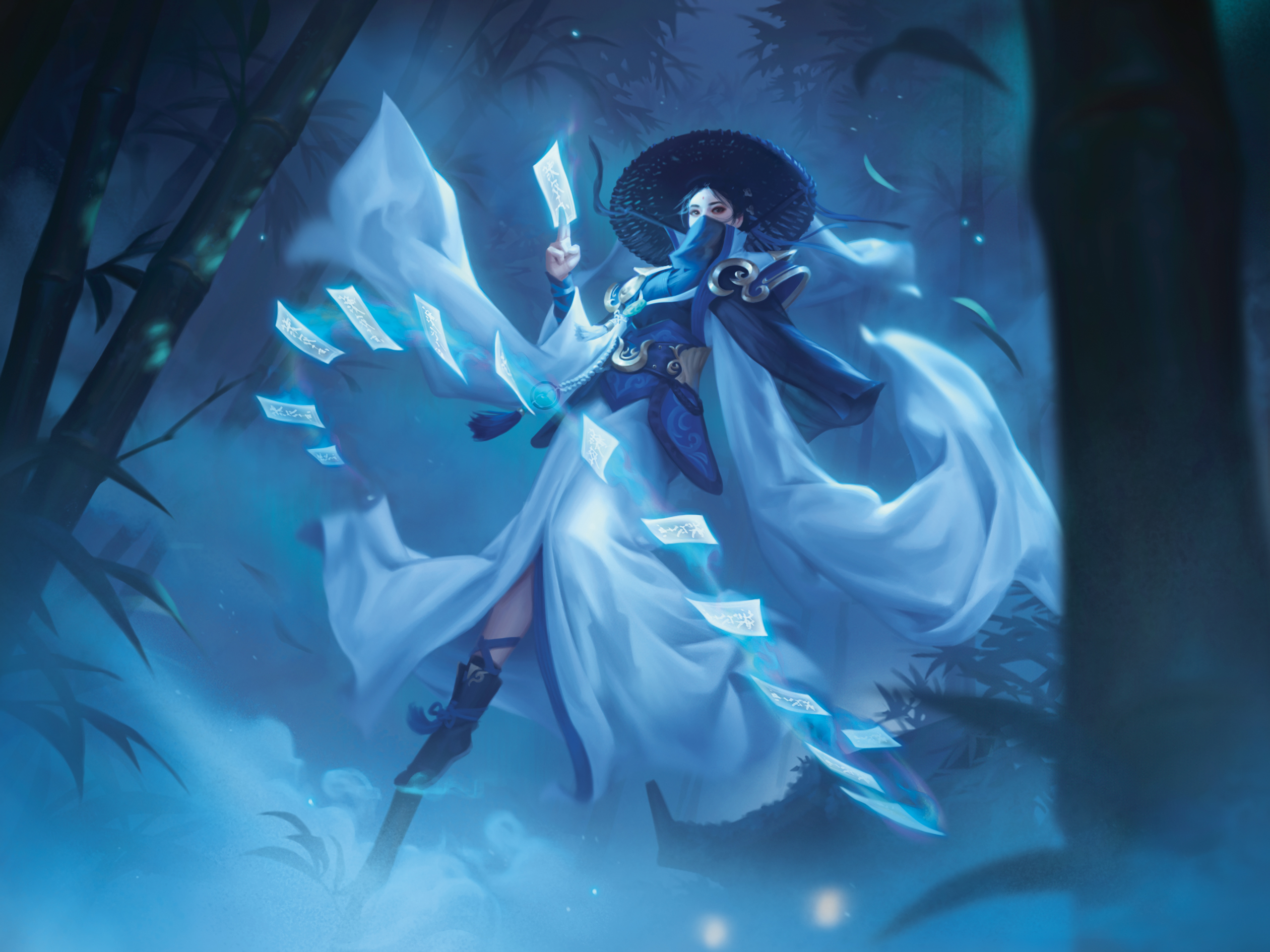
How do you pay for mixed {c} and {r} costs?
The short answer is that {c} is greedy:
- Pay for {c} costs before {r} costs.
- Use {c} before using {r} to pay for costs.
A quick reminder that {c} are chi points (blue circle) that are gained when pitching an Inner Chi card, and {r} are resource points (red circle) that can be gained by pitching regular cards or from some effects. {c} and {r} costs belong to a type of cost called “asset costs”. Each type of asset in a cost must be paid in the following order:
- Chi points {c}
- Resource points {r}
- Life points {h}
- Action points
When paying a {c} cost, if you do not have enough {c} (floating) in your asset pool, you can only pitch cards that give you {c} until you have enough to pay the cost (similar to how pitching normally works). Once you have enough {c} to pay the cost, that much {c} is deducted from your asset pool. Note you can not pitch non-Inner Chi cards here because they don’t give you {c} when pitched – you have to wait until you’ve finished paying the {c} cost.
Next, you need to pay any {r} cost. As usual, you may pitch cards until you have enough to pay the cost. Because {c} can pay for either {c} or {r} costs, {c} is deducted from your asset pool first, and then {r} is deducted. Finally, you pay any {h} or action point costs.
Currently, there is no reason to track floating {c} any different from {r}, as all {c} costs are 3, and all cards that pitch for {c} give you exactly 3. Here are some examples of the results of paying different types of costs.
Tyler has no {c} or {r} and controls a Frostbite token. Tyler activates their hero ability which costs 3{c} and 1{r}. Tyler pitches an Inner Chi for 3{c}, then a blue card for 3{r}, and the cost is paid. The 3{c} are used first, and then 1{r}, so Tyler has 2{r} remaining.
Tyler has 2{r}. Tyler plays a card which costs 3{r}. Tyler pitches an Inner Chi for 3{c}, and the cost is paid. The 3{c} are used first, so Tyler has 2{r} remaining.
Tyler has no {c} or {r}. Tyler plays a card which costs 1{r}. Tyler pitches an Inner Chi for 3{c} and the cost is paid. Only 1{c} is used, so Tyler has 2{c} remaining.
Tyler has 2{c}. Tyler plays a card which costs 3{r}. Tyler pitches a blue card for 3{r}, and the cost is paid. 2{c} are used first, and then 1{r} is used to pay the rest, so Tyler has 2{r} remaining.
Tyler has 1{r}. Tyler plays a card which costs 2{r}. Tyler pitches an Inner Chi for 3{c}, and the cost is paid. 2{c} are used first, so Tyler has 1{c} and 1{r} remaining.
Can I specify any value for X when I play a card with Nuu?
No. If you are playing a card without paying its {r} cost, and part of that cost involves X, then you can only choose X=0.
From a thematic perspective, Nuu uses her opponent’s power against them, seducing them, stealing their techniques, and turning the tables – not wielding unlimited power. From a rules/balance perspective, it should be obvious why we don’t allow players to deal infinite damage.
Can I target or choose face-down equipment for effects?
No. If a card is face-down in a zone that is usually face-up, you can usually think of it as a completely blank card. You can’t assume that it has any specific names, types, or abilities, because the only player that can confirm anything about the card is the player that controls it.
As such, effects that can target equipment, or allow you to choose an equipment, can not use cloaked equipment while they are face-down. Even effects that care about how many equipment you control, do not count your face-down cloaked cards.
Tyler controls 3 face-down cloaked equipment and 1 face-up equipment. Nic plays Exposed to the Elements. Because there is only one face-up equipment controlled by Tyler, that is the only target Nic can declare as the target to put a -1{d} counter on. When Exposed to the Elements resolves, Nic can only choose the face-up equipment to be destroyed (if it has 0{d}).
Tyler has less life than Nic. Tyler controls 3 face-down cloaked equipment and 1 face-up equipment, and Nic controls 2 face-up equipment. Tyler controls fewer tokens than Nic. Tyler plays Down But Not Out, and the trigger resolves giving it +3{p}, overpower, and a triggered ability.
Do you still shuffle the opponent’s deck if they have no cards in hand and hit with Bonds of Agony?
Yes. Bonds of Agony’s triggered effect is broken down into several steps.
- Look at their hand.
- Choose a card.
- Search their hand, deck, and graveyard.
- Banish up to 3 cards with the same name as the chosen card.
- They shuffle.
The only one of these effects that is dependent on selecting a card is “banish up to 3 cards with the same name as the chosen card”. Because you have not chosen a card (because their hand is empty), you cannot banish any cards with the same name. But the other effects aren’t dependent on that part of the ability, so you still try to resolve as much as possible – you get to search their deck and they still shuffle.
Nic has no cards in hand. Tyler attacks Nic with Bonds of Agony and has activated 3 attack reactions this chain link. The attack hits and the triggered effect resolves. Tyler looks through Nic’s deck and Nic shuffles.
Does “when this defends” trigger when a card is added as a defending card from an effect?
Yes. Regardless of how a card is put onto the combat chain as a defending card, it is considered to have defended, and the player being attacked is considered to be the one who defended with it.
Cards can be added to a chain link as defending cards, even if they couldn’t normally be put there (e.g. during the defend step). This means you can even add cards without defense values, such as instants, but they will not contribute anything to the total defense against the attack when calculating damage.
To work out if a card is defending alone or if its defending together with other cards, you look at what is being added to the chain link at that moment, not what is already there. When a card is added to a chain link as a defending card (declared during the defend step, resolving as a defense reaction, or added by an effect) it is considered to defend alone if it is the only card being added as part of that action/resolution/effect, even if there are already cards defending on that chain link. If other cards are being added at the same time, all of those cards are considered to defend together.
Tyler attacks Nic with a Mystic attack action card. Nic defends with a card. Tyler plays and resolves Intimate Inducement, choosing to add Battlefront Bastion as a defending card on the activate chain link. Because Battlefront Bastion is only a single card being added, it is considered to defend alone against the attack and will trigger its effect.
Does “when this defends” trigger before or after cards are defending?
After the cards are on the chain link as defending cards.
Some attacks are dependent on defending cards, while some defending cards are dependent on the attacks. To solve this cycle of dependencies:
- First, the card is put onto the combat chain as a defending card.
- Then, the defend event occurs.
This means effects that already active and are dependent on defending cards are resolved first, and then you look at effects that trigger when something defends. This provides a clear-cut way of resolving some otherwise tricky interactions, and it is consistent with other ways we resolve these interactions in the game (e.g. attacks go onto the combat chain as attacking, and then the attack event occurs).
Tyler attacks Nic with Widowmaker, which currently has +3{p} because it is not defended by any cards. Nic defends with a card from hand and Stonewall Gauntlet. Both cards become defending cards and Widowmaker loses its +3{p} because it is defended by two cards. The defend event occurs, and Stonewall Gauntlet will not trigger because it didn’t defend an attack with {p} greater than its base.
Tyler attacks Nic with Surging Militia. Nic defends with a non-equipment card from hand and Stonewall Gauntlet. Both cards become defending cards and Surging Militia gains +1{p} because it is defended by one non-equipment card. The defend event occurs and Stonewall Gauntlet will trigger because it defended an attack with {p} greater than its base.
